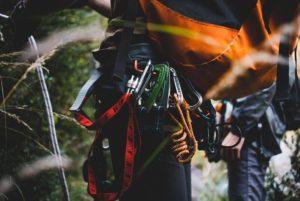Picture this: you’re out in the wild, surrounded by nature’s beauty, the scent of pine in the air, and the thrill of exploration coursing through your veins. But wait, what if the unexpected happens? In the midst of your outdoor escapade, facing a sudden crisis can be daunting. Fear not, because, in this article, we’re delving deep into the realm of survival skills for outdoor emergencies.
Whether you’re a seasoned trekker or just starting to dip your toes into the wilderness, knowing how to handle unexpected situations can mean the difference between a harrowing ordeal and a triumphant tale to share around the campfire. So, let’s gear up with knowledge and arm ourselves with practical strategies to navigate through the challenges Mother Nature might throw our way.

From basic essentials to advanced techniques, we’ve got you covered, ensuring you’re well-prepared to brave the elements and emerge victorious from any outdoor crisis.
The Unpredictability of the Outdoor
Nature has a way of keeping us on our toes, doesn’t it? Just when you think you’ve got the lay of the land, a sudden change in weather, a wrong turn, or an unexpected injury can quickly turn an idyllic outing into a test of survival. Whether you’re hiking, camping, or embarking on a thrilling adventure, it’s crucial to remember that the great outdoors can be as unpredictable as it is enchanting. Being prepared and equipped with the right knowledge can empower you to face adversity head-on and come out stronger.
In the following sections, we’ll dive into a treasure trove of survival skills that encompass everything from setting up shelter and finding food to navigation, first aid, and effective communication. So, if you’re ready to embrace the challenges of the wilderness with confidence and resilience, let’s delve into the essential skills that could make all the difference in a crisis.
1. Assessing the Situation
In any emergency, the first step is to pause and assess the situation calmly and accurately. Take a deep breath and survey your surroundings. What triggered the crisis? Is it a sudden storm, a lost trail, or an injury? Understanding the nature of the emergency is key to making informed decisions. Check for immediate dangers, like unstable terrain or approaching wildlife.

Prioritize your safety and the safety of those with you. If injuries are involved, evaluate the severity and administer first aid if necessary. Once you’ve gathered essential information, you can move forward with a clear understanding of what needs to be addressed. Remember, staying composed during this critical phase can set the tone for how well you manage the rest of the situation.
2. Finding Shelter
How to choose a safe shelter location
When you’re caught in an outdoor emergency, finding or creating shelter becomes paramount. The right shelter can shield you from the elements, provide warmth, and increase your chances of survival. Start by seeking higher ground if possible, as it reduces the risk of flooding and offers better visibility. Avoid setting up camp under dead trees or near rocky cliffs where loose debris could pose a threat.
Look for natural formations like caves, overhangs, or dense foliage that can provide cover. Pay attention to wind direction—position your shelter to block prevailing winds and reduce heat loss. If no natural options are available, consider constructing a makeshift shelter using available materials. Remember, the goal is to stay dry, warm, and protected while awaiting rescue or devising your next move.
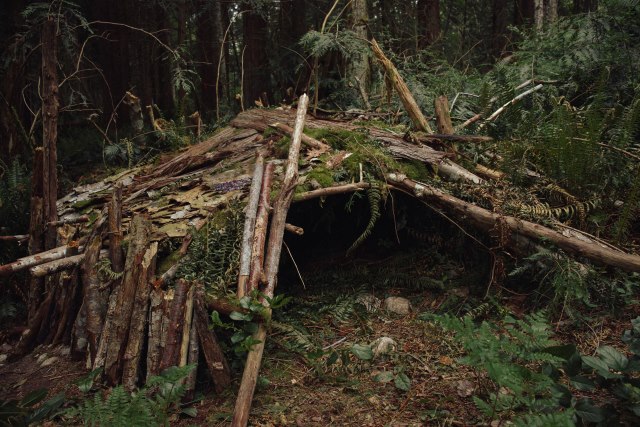
Tips on building emergency shelters
In situations where you don’t have access to natural shelters, knowing how to build an emergency shelter can be a lifesaver. Begin by gathering materials such as branches, leaves, pine needles, and any available debris that can insulate your shelter. The classic lean-to is a simple yet effective option: Prop a sturdy branch against solid support, like a fallen tree or large rock, and layer smaller branches, leaves, or grass on one side to create a roof.
Another option is the debris hut, which involves creating a framework of branches and then layering leaves and debris on top for insulation. A third option is an A-frame shelter, which requires placing a long pole across two supports and draping a tarp or other waterproof material over the frame.
Remember, the key is to create a shelter that keeps you dry, protected from wind and elements and conserves body heat. Practice building these shelters in non-emergency settings to enhance your skills and familiarity. Additionally, consider carrying a lightweight emergency shelter, like a compact tarp or space blanket, in your outdoor gear for added preparedness.
3. Building a Fire
Different methods of starting a fire
Fire can provide warmth, light, and the means to cook food in a survival situation. Having the knowledge and skills to start a fire using various methods is crucial. The most traditional method is the friction-based fire-starting technique, such as the bow drill or hand drill. These methods involve rapidly spinning a wooden spindle against a wooden base to create friction and generate heat, eventually igniting a tinder bundle.
For those with modern tools, a ferrocerium rod and striker offer a reliable way to produce sparks that can ignite dry tinder. Additionally, waterproof matches or lighters are valuable items to carry in your emergency kit. When using any fire-starting method, gather a variety of dry tinder materials, such as dry leaves, grass, and small twigs, to help the fire catch and grow.
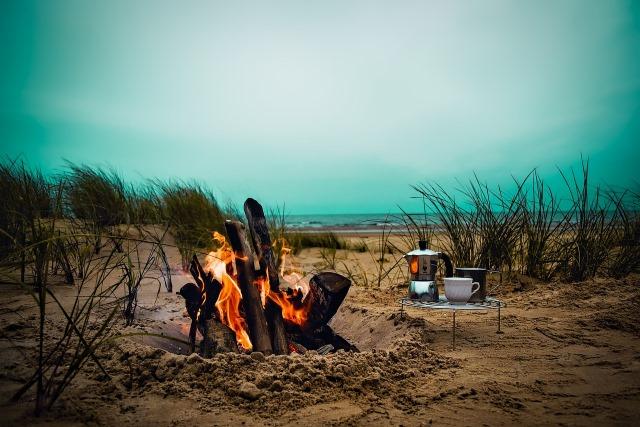
Safety tips and guidelines for maintaining a fire
Prioritize safety when building a fire, choosing a suitable location that’s away from flammable materials, and keeping the fire under control. As fires can spread quickly, create a fire pit using rocks to contain the flames.
Always ensure the fire is completely extinguished before leaving the area by dousing it with water and stirring the ashes to prevent any lingering embers from reigniting. Mastery of fire-building techniques empowers you to create warmth, signal for help, and provide a sense of security during unexpected outdoor emergencies.
4. Finding and Purifying Water
Tips on locating reliable water sources
In a survival situation, access to clean and safe drinking water is crucial for your well-being. Here are some important tips for finding and purifying water in the outdoors:
1. Locating Water Sources:
- Look for natural sources of water such as streams, rivers, and lakes. These are more likely to provide clean water than stagnant pools.
- Avoid water sources that appear murky, have an unusual odor, or are near sources of pollution.
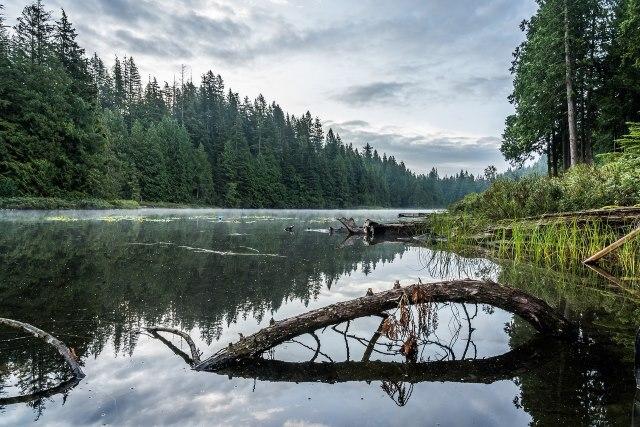
2. Water Collection:
- Collect water from fast-flowing sections of streams or rivers, as they are less likely to be contaminated.
- Use a clean container or improvised receptacle to gather water. Avoid using containers that have held chemicals or toxic substances.
Methods of water purification
Ensure safe drinking water by boiling it for at least one minute or using purification tablets. Portable filters and purifiers can also remove contaminants, while solar disinfection (SODIS) and improvised filters offer options. Prioritize water purification to prevent illness and ensure well-being.
5. Finding Food in the Wilderness
Edible plants and safe-to-eat wildlife
Identifying edible plants and wildlife is crucial for sustenance. Learn about local vegetation like berries, nuts, and roots that are safe to consume. Familiarize yourself with non-toxic insects and small animals that can provide valuable protein. Avoid potentially poisonous species and focus on gathering food safely. Developing this knowledge can be a life-saving skill in emergencies.

Preparing and cooking wild food
Once you’ve gathered edible plants or caught small game, proper preparation and cooking methods are essential. Remove any inedible parts, clean thoroughly, and cook thoroughly to eliminate harmful bacteria or parasites. Cooking methods like roasting, boiling, or stewing can make the food safer to eat.
It’s essential to exercise caution and ensure your food is properly cooked to avoid foodborne illnesses that could worsen your situation. If you’re uncertain about a particular plant or animal, it’s better to err on the side of caution and avoid consuming it.
6. Navigating without Modern Tools
How to navigate without GPS or a compass
Navigating without the aid of modern tools like GPS or a compass can be challenging but crucial for survival. Learn to observe natural cues such as the sun’s position, the direction of prevailing winds, and the growth patterns of vegetation. The sun rises in the east and sets in the west, which can help you determine directions.
Moss often grows on the north side of trees, providing a basic directional indicator. Stars can guide you at night, with the North Star (Polaris) pointing north. Rivers and streams tend to flow downhill, which can lead you to lower ground or civilization. If you’re uncertain about your path, it’s often better to stay put and signal for help rather than risk getting more lost. Developing basic navigation skills before venturing into the wilderness can greatly increase your chances of finding your way back to safety.
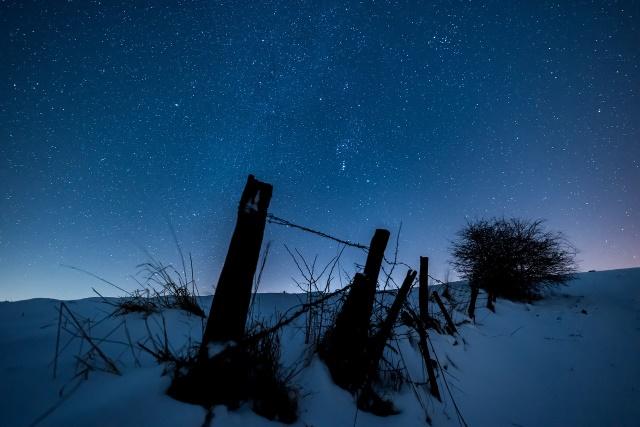
How to use natural landmarks and the sun for orientation
In a survival situation, nature becomes your compass. Pay attention to prominent natural features like mountains, hills, valleys, and rivers, which can serve as landmarks to help you maintain a sense of direction. The sun is an invaluable tool for orientation. In the Northern Hemisphere, the sun rises in the east and sets in the west. During midday, when the sun is at its highest point, shadows cast by objects will appear shortest and point north. In the afternoon, shadows will extend to the east, indicating the west.
Learning to interpret these subtle signs can help you determine your heading. In the absence of the sun, you can use the moon and stars to guide you at night. The North Star (Polaris) remains relatively stationary and can help you find North. Familiarize yourself with the natural world around you and practice using these cues to enhance your navigational skills.
Tips on creating improvised navigation tools
Craft improvised methods for orientation when modern tools are unavailable. Create a shadow stick by marking the tip of its changing shadow to track the sun’s movement. Utilize an analog watch by pointing the hour hand towards the sun to find the south. Estimate daylight with your watch to gauge time before sunset. While not as precise as GPS, these techniques offer valuable guidance. Practice in familiar settings to enhance your navigation skills without modern devices.
7. Signalling for Help
Signaling methods: mirrors or smoke
In dire situations, effective signaling can save your life. Employ reflective surfaces like mirrors to flash sunlight in the direction of potential rescuers or aircraft. Create visible distress signals using three of anything (whistles, gunshots, shouts) as a universal SOS code. Smoke signals can also attract attention, using damp leaves on fire to generate thick smoke. Make your presence known by using these methods during daylight hours when they are most visible.
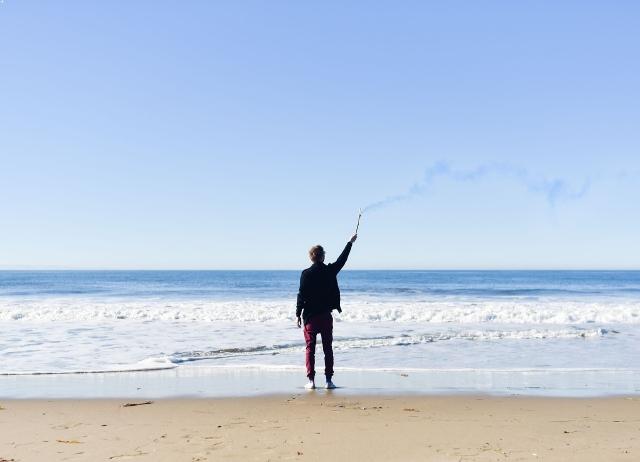
8. Basic First Aid Skills
How to assemble a compact first aid kit
Equipping yourself with basic first-aid knowledge and a compact kit is crucial. Assemble essentials like adhesive bandages, gauze pads, antiseptic wipes, adhesive tape, tweezers, scissors, and pain relievers. Learn how to clean and dress wounds, immobilize fractures, and perform CPR if necessary.
Understanding these fundamental skills can provide critical assistance to yourself or others in times of need. Remember, preparation and knowledge are your best allies in emergency situations.
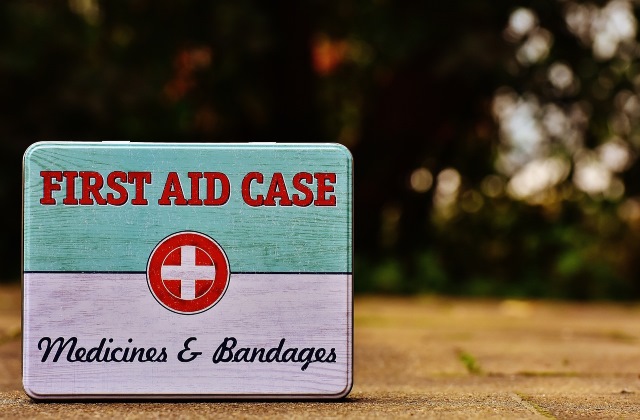
How to treat common outdoor injuries
In outdoor emergencies, knowing how to address common injuries can make a significant difference. Be prepared to handle sprains, strains, cuts, and insect bites. For sprains and strains, remember the RICE method: Rest, Ice, Compression, and Elevation. Clean cuts thoroughly and use sterile bandages to prevent infection. Familiarize yourself with the identification and treatment of allergic reactions to insect stings or plant contact.
Carrying antihistamines and pain relievers can be valuable. It’s essential to understand when to stabilize and when to seek professional medical help. Being able to provide immediate care can alleviate pain and prevent complications.
9. Dealing with Extreme Weather
Safety measures (for coping with heat, cold, rain, and storms)
Surviving in the outdoors requires adapting to various weather conditions. In hot environments, stay hydrated and protect yourself from the sun with appropriate clothing and sunscreen. Create shade using natural materials if possible. In cold weather, layer clothing to trap warmth and insulate your body.
Avoid sweating excessively, which can lead to chilling later. During rain, having waterproof gear is crucial to prevent hypothermia. Seek shelter from lightning storms and avoid high ground. Learn to read the sky and notice changes in wind patterns as indicators of impending weather shifts. Being prepared and knowing how to respond to extreme weather scenarios can significantly increase your chances of survival.

Hypothermia and Heatstroke
Understanding how to prevent and treat hypothermia and heatstroke is essential for outdoor survival. Hypothermia occurs when your body loses heat faster than it can produce, leading to a dangerously low body temperature. To prevent hypothermia, dress in layers, keep dry, and stay active. If symptoms of hypothermia, such as shivering and confusion, appear, warm the person gradually and provide warm fluids.
Heatstroke, on the other hand, is a result of the body overheating, and it can be life-threatening. To avoid heatstroke, drink plenty of water, wear lightweight and breathable clothing, and take frequent breaks in the shade. If someone is suffering from heatstroke, move them to a cooler place, remove excess clothing, and apply cool water to their body. Recognizing the signs of both conditions and knowing how to respond can be crucial in a crisis.
10. Avoiding and Responding to Wildlife Encounters
Encountering wildlife in the wilderness is both thrilling and potentially dangerous. To prevent negative interactions, make noise while hiking to alert animals of your presence, avoid surprising them, and store food securely. If you encounter a wild animal, stay calm and do not run. Back away slowly, maintain eye contact without staring, and make yourself appear larger. In the case of a predatory animal, stand your ground and use any available deterrents like bear spray.

See also:
- Surviving the Wilderness: Tips for Avoiding Wildlife Encounters
- How to Stay Safe While Camping in Bear Country
- How to Avoid an Unfriendly Encounter with a Mountain Lion When Hiking
If an animal charges, stand your ground and speak loudly. It’s crucial to be informed about the specific wildlife in the area you’re exploring to know how to respond appropriately. Understanding animal behavior and having a plan in place can greatly reduce the risk of dangerous encounters.
Conclusion
Mastering survival skills for outdoor emergencies is not just about preparing for the worst; it’s about gaining a profound understanding of nature and developing a deep sense of self-reliance. By learning to assess situations, build shelters, find food and water, navigate, provide first aid, and interact with wildlife safely, you empower yourself to explore the great outdoors with confidence.
These skills not only enhance your chances of survival but also enrich your outdoor experiences, allowing you to connect more intimately with the natural world. Remember, preparation and practice are key. As you embark on your outdoor adventures, take the time to hone these survival skills, for they are the true compass that guides you through the untamed beauty of the wilderness.


